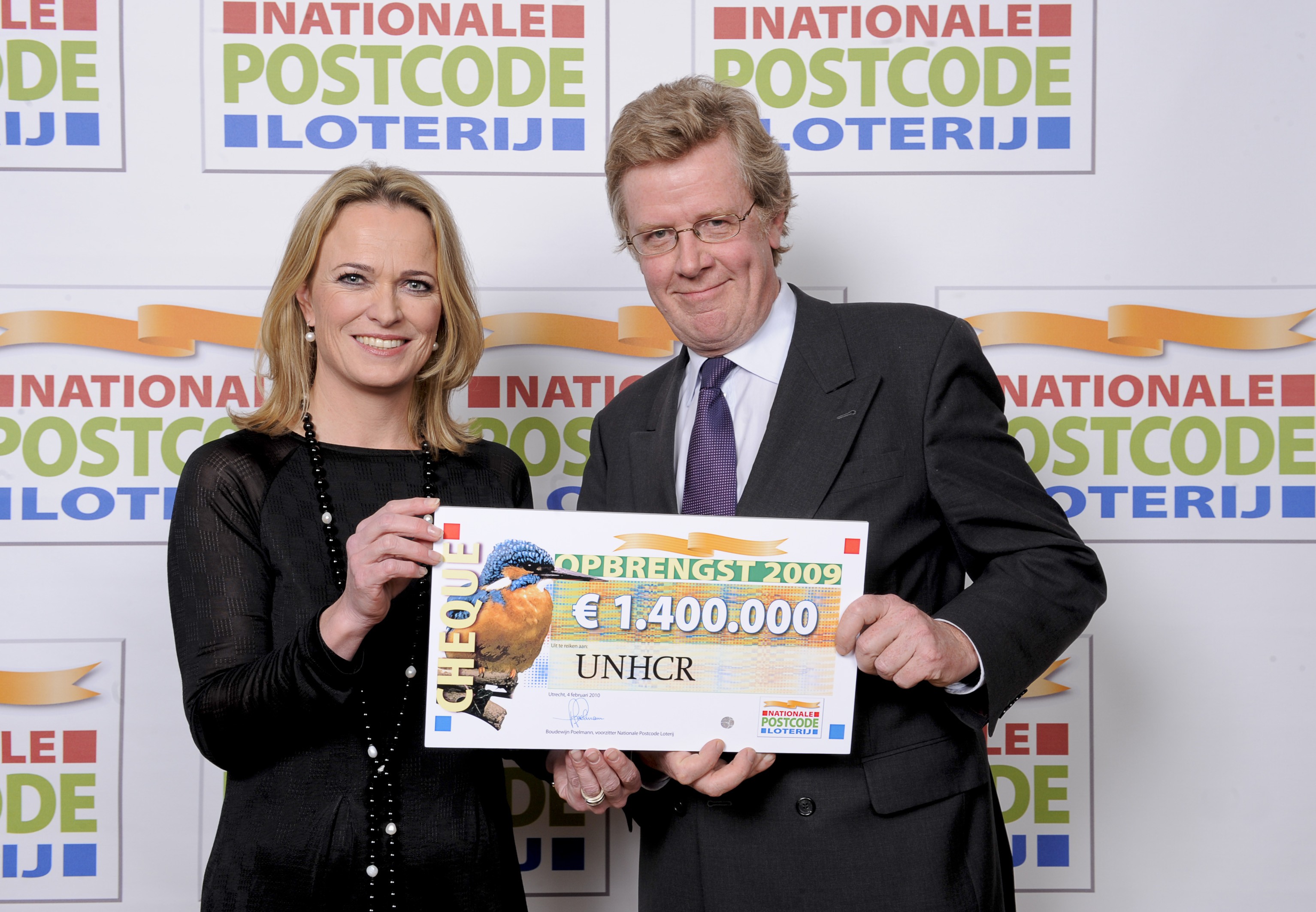Artistic appreciation and tolerance in an Armenian village
Artistic appreciation and tolerance in an Armenian village

YEGHEGIS, Armenia, July 17 (UNHCR) - Nestled in a valley surrounded by towering mountains, this village in southern Armenia's Vayots Dzor province is an oasis of artistic appreciation and tolerance in the fractious Caucasus.
Yeghegis is desperately poor - the main income comes from walnuts, said to be the finest in the country - but it houses a wealth of artistic, architectural and religious treasures. The villagers are proud and protective of this heritage, even works created by ethnic Azeris whose descendants fled the region during the 1988-1994 conflict between Armenia and Azerbaijan. Thousands were killed and more than a million people displaced by the fighting.
"These wall paintings are part of the history of our village and they are part of our life. We do not want to destroy beautiful things which were made by others, whether they are Armenians, Azeri or Jews," said Yeghegis's Armenian mayor, Melik Babagulyan, as he showed awed visitors around his office lobby.
The brightly coloured designs, incorporating eastern motifs and covering the walls, pillars and ceiling, were commissioned by his predecessor - an Azeri - but Babagulyan saw no reason to replace them with something typically Armenian.
Yeghegis has seen better days. Located on the road linking southern Armenia to the north, it had great strategic and economic importance in the Middle Ages. Silk Road traders passed through after crossing the nearby Selim Pass, while southern Armenian royalty lived in the area.
The Orbelian family built a castle on a mountain overlooking the valley and buried their dead in local cemeteries, which still stand. The village of just 500 people, mostly naturalised former refugees, is also served by five historic churches and one basilica - all reasonably well preserved.
Although under the suzerainty of the Seljuks, and later the Mongol-Tatars, Yeghegis remained an Armenian stronghold until the 14th Century, when Turkmen tribes took control over this part of the country. Not trusting their new subjects and aware of the strategic importance of Yeghegis, the Turkmens encouraged the ethnically related Azeris to settle in the area.

By the middle of the last century, with the area now under Soviet control, all the Armenians had left. But the tide turned from 1989, when the tensions between Azerbaijan and Armenia over the disputed Nagorno-Karabakh enclave reached the valley. This time the Azeris fled and were replaced by Armenian refugees from Sumgait in Azerbaijan and people from surrounding villages.
But rather than destroying the legacy of rival communities - as seen in conflict zones elsewhere in the world - the people of Yeghegis decided to preserve the heritage of previous generations, regardless of their race or creed.
Mayor Babagulyan took his guests to the shabby public library, whose shelves held books in Armenian, Russian and Azeri. "Almost nobody in the village can understand and read the Azerbaijan language, but the books have been here before and they shall stay," he said. "One day the Azeri may visit us, and what would they say when they learn that we have thrown away their books."
His sentiments are shared by others in the village, such as shepherd Kochar Kocharyan, an ethnic Armenian born and bred in a neighbouring Azeri-majority village. "We have to overcome the hatred and to enjoy life in peace. The first step towards peace is understanding and tolerance," said the 80-year-old, who hopes to promote understanding by publishing his translations of Azeri poetry.
On a tour of the village, one passes the ancient churches and a cemetery full of Armenian khachkars, or stone crosses, that were used as tombstones or memorials and reached their peak in the 12-13th centuries. Next door, another surprise - an undamaged Muslim prayer house. "They did not touch our churches - they even maintained them. Why would we not care for their holy place," reasoned Babagulyan.
There are also Jewish and Azeri cemeteries, protected and tended by the locals in contrast to many other villages where such places have been destroyed in recent years. "I care for the graves of the Azeri, because I hope that an Azeri will do the same with the tombs of my ancestors in Azerbaijan," said former refugee Sergey Alkamyan, who found a new home here with UNHCR help.
The 13th-Century Jewish cemetery is evidence that there was once a thriving and literate Jewish community in this former pit stop on the Silk Road. A team from the Hebrew University of Jerusalem has worked on the site.

Protection is one thing, but preservation is also needed if future generations are to appreciate the multicultural treasures of Yeghegis. That might be a pipe dream because the local authorities have no funds and the central government has other priorities. But the visitors believe that the village deserves help, possibly from overseas donors.
"I believe that in the spirit of reconciliation this village could serve as an extraordinary example of how people overcome hatred and depart from official positions," said one.
By Peter Nicolaus in Yeghegis, Armenia








